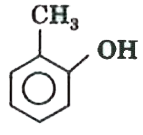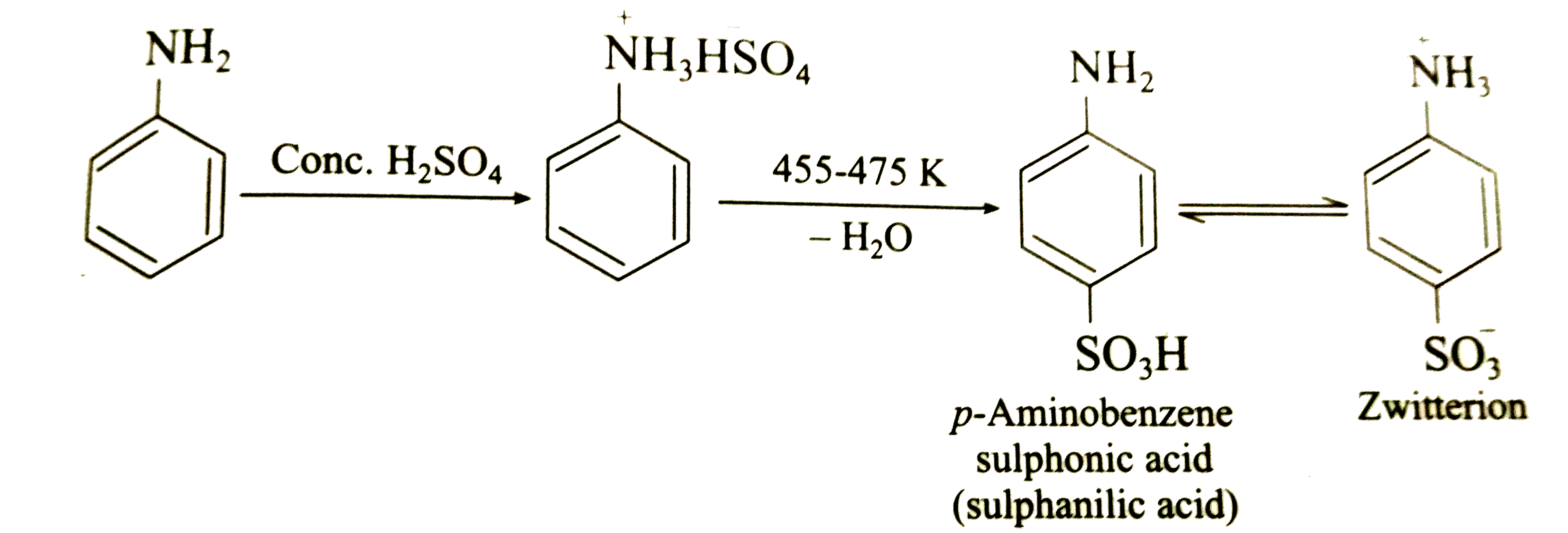InterviewSolution
This section includes InterviewSolutions, each offering curated multiple-choice questions to sharpen your knowledge and support exam preparation. Choose a topic below to get started.
| 10851. |
Valence bond theory does not give quantitative interpretation of magnetic data. |
|
Answer» |
|
| 10852. |
Which of the following contains nitrogen? |
|
Answer» PROTEINS |
|
| 10853. |
Whatdoyou meanbybenefactionprocess ? |
| Answer» SOLUTION :The process used toconcentratean ore iscalledthebenefactionprocess. FOREXAMPLE, FROTHFLOATATION,electromagneticseparation, leaching, ETC. | |
| 10854. |
Which statement is NOT correct? |
|
Answer» Potassium PERMANGANATE is a powerful oxidising SUBSTANCE. |
|
| 10855. |
What is the characteristic valence shell configuration of coinage metals ? |
|
Answer» `ns^2np^6` |
|
| 10856. |
Which of the following reagents can convert |
|
Answer» `RMgX//H_(2)O` 
|
|
| 10857. |
Write the IUPAC names of the following (i)[Co(NH_(3))_(6)Cl_(3) (ii)[Co(NH_(3))_(5)Cl]Cl_(2) (iii) K_(3)[Fe(CN)_(6)] (iv)K_(3)[Fe(C_(2)O_(4))_(3)] (v) K_(2)[PdCl_(4)] (vi) [Pt(NH_(3))_(2)Cl(NH_(2)CH_(3))]Cl |
|
Answer» SOLUTION :`(i)` Hexaamine cobalt (III) chloride `(ii)` Pentaamine chloridocobalt (III) chloride `(iii)` Potassium HEXACYANOFERRATE (III) `(iv)` Potassium trioxalatoferrate (III) `(v)` Potassium tetrachlorido palladate (II) `(vi)` Diamminechlorido (METHYLAMINE) PLATINUM (II) chloride |
|
| 10858. |
What type of defect can arise when a solid is heated? Which physical property is affected by it and in what way? |
| Answer» SOLUTION :On heating, some atoms or ions leave the lattice sites and vacance DEFECT is produced. It RESULTS in DECREASE in the density of the substance. | |
| 10859. |
Which shows weak ionisation in water |
|
Answer» `H_(2)SO_(4)` |
|
| 10860. |
Which one is most reactive towards electrophilic reagent ? |
|
Answer»
 is most reactive DUE to the presence of electron RELEASING GROUP. is most reactive DUE to the presence of electron RELEASING GROUP.
|
|
| 10861. |
Which of the following curve will represent the variation of conductance C during titration of CH_(3)COOH by gradual addition of NaOH solution (V) |
|
Answer»
|
|
| 10862. |
Which one of the following esters cannot undergo Claisen self-condensation ? |
|
Answer» `CH_3 CH_2CH_2 CH_2 COOC_2H_5` |
|
| 10863. |
Vapour pressure of pure A = 100 torr, moles = 2. Vapour pressure of pure B = 80 torr, moles = 3. Total vapour pressure of mixture is |
|
Answer» 440 torr `P_("total")=P_(A)+P_(B)=100xx(2)/(5)+80xx(3)/(5)=88` torr. |
|
| 10864. |
Which of the following compounds is formed when acetophenone is treated with bromine in acidic medium ? |
|
Answer»
|
|
| 10865. |
Total number of Bravais lattices is |
|
Answer» 3 |
|
| 10866. |
When ethanol on dehydration with conc. H_(2)SO_(4) at 443 K gives ethane. What will be obtained if the temperature is raised to 413 K ? |
| Answer» SOLUTION :ETHOXYETHANE | |
| 10867. |
What is lucas reagent? How does it help in distinguishing primary, secondary and tertiary alcohols? |
|
Answer» Solution :Lucas reagent is a mixture of conc. HCl and ANHYDROUS `ZnCl_(2)`. The product is alkyl chloride ACCOMPANIED by white turbidity and cloudiness. `-underset(1^(@), 2^(@)"or"3^(@))underset(("Alcohol")) underset(|)overset(|)(C)-OH+H-Cloverset(ZnCl_(2))(to)-underset(("Alkyhchloride"))underset(|)overset(|)(C)-Cl+H_(2)O` (i) It turbidiy appears immediately, alcohol is tertiary `(3^(@))` (ii) It turbidity appears after sometime, alcohol is secondary `(2^(@))` (iii) In case turbidity appears on heating, alcohol is primary `(1^(@))` |
|
| 10868. |
What is battery? |
| Answer» SOLUTION :BATTERY is a COMBINATION of GALVANIC cells in series where the chemical energy of redox reaction is converted to ELECTRICAL energy. Batteries are used as a source of electrical energy. | |
| 10869. |
Water gas is |
|
Answer» `CO+CO_2` |
|
| 10870. |
Which one of the following species is diamagnetic in nature ? |
|
Answer» `He_(2)^(+)` |
|
| 10871. |
What are biodegradable and non-biodegradable detergents? Give one example of each. |
|
Answer» SOLUTION :Biodegradable detergents are DECOMPOSED by micro-organisms present in sowage. Non-biodegradable detergents which have branches CHAIN alkyl groups are not decomposed by micro-organisms and create WATER POLLUTION. |
|
| 10873. |
Which of the following compounds cannot be used as solvent in Friedel-Crafts reaction ? |
|
Answer» Nitrobenzene |
|
| 10874. |
Which of the following compounds is colourless? |
|
Answer» `Fe^(3+)` |
|
| 10875. |
Which acid of each pair shown here would you expect to be stronger ? . |
Answer» SOLUTION : . .
|
|
| 10876. |
Which of the following statement (s) is (are) correct |
|
Answer» The pH of `1.0 xx 10^(-8) M` solution of HCl is 8 `H_(2)PO_(4)^(-) + H_(2)O hArr HPO_(4)^(2-) + H_(3)O^(+)` `H_(2)O + H_(2)O hArr OH^(-) + H_(3)O^(+)` K (Auto protolysis constant of water i.e., ionic product of water) increases with temperature. For half neutralisation of a weak acid by a weak base, `pH = pK_(a) + log.(["Salt"])/(["Acid"])` [Salt] = [Acid], `:. pH = pK_(a)`. |
|
| 10877. |
Two gaseous equlibriua SO_(2(g))+1/2O_(2(g))hArrSO_(3(g))and 2SO_(3(g))hArr2SO_(2(g))+O_(2(g)) have equlibrium constants K_(1) and K_(2) respectively at 298K. Which of the following relationship between K_(1)and K_(2) is correct |
|
Answer» `K_(1)=K_(2)` |
|
| 10878. |
Which of the following are addition polymers ? |
|
Answer» Nylon |
|
| 10879. |
Which one is the complementary base in RNA strand to the adenine base in DNA during protein synthesis: |
|
Answer» Adenine |
|
| 10880. |
Which of the following countries had an issue related to the migration of Rohingyas? |
| Answer» Answer :C | |
| 10881. |
What is complex salt ? |
| Answer» Solution :These SALTS RETAIN their IDENTITY in solution in water or in any other solvents. It EXISTS in SOLID as well as in solution form. | |
| 10882. |
What is the action of concentrated sulphuric acid on aniline? |
Answer» Solution :ANILINE on treatment with cold sulphuric ACID FORMS anilinium hydrogen sulphate which on HEATING with sulphuric acid at 453-473 k GIVES p-aminobenzene sulphonic acid (sulphanilic acid) as major product. 
|
|
| 10883. |
Which of the following haloalkanes reacts with aqueous KOH most easily ? Explain giving reason. (i) 1-Bromobutane (ii) 2-Bromobutane (iii) 2-Bromo-2-methylpropane (iv) 2-Chlorobutane. |
Answer» SOLUTION :2-Bromo-2-methylpropane (iii) is a `3^(@)` alkyl BROMIDE. It readily undergoes IONIZATION to form a STABLE `3^(@)` carbocation. Therefore, it reacts with aq. KOH most readily. 
|
|
| 10884. |
There is sudden change is the slopes for some metal oxides like MgO, ZnO , HgO in Ellingham diagram . It is the indication of |
|
Answer» INSUFFICIENT supply of oygen |
|
| 10885. |
Which of the followingis not correct |
|
Answer» A SIGMA BOND is weaker than `pi` bond |
|
| 10886. |
What are reducing and non-reducing sugars ? |
Answer» SOLUTION :
|
|
| 10887. |
Which of the following chlorofuorocarbon is hyghly toxic ? |
|
Answer» `C ClF_(2)` |
|
| 10888. |
Which of the following is the formula of argol? |
|
Answer» `{:(,,CH(OH)COOH),(,,"|"),(,,CH(OH)COOK):}` |
|
| 10889. |
Which colour well be observed when Manganese dioxide is fused with KOH in presence of O_(2)? |
|
Answer» Purple |
|
| 10890. |
Which of the followingppt , is soluble dil , HNO_(3)and NH_(3) solution ? |
|
Answer» `Ag_(2)S_(2)O_(3)` |
|
| 10891. |
The units of Normality are |
|
Answer» MOLE. `LIT^(-1)` |
|
| 10892. |
What happens when methyl magnesium bromide reacts with ethyl methanoate followed by acid hydrolysis? |
Answer» SOLUTION :
|
|
| 10893. |
Which one of the following methods is neither meant for the synthesis nor for separation of amines? |
|
Answer» Hinsberg reagent |
|
| 10895. |
The standard Gibbs energy change at 300K for the reaction 2A⇋B+C is 2494.2 J. At a given time, the composition of the reaction mixture is [A] =21 , [B] = 2 and [C] =21 . The reaction proceeds in the : [R=8.314J/K/mol,e=2.718] |
|
Answer» FORWARD direction because Q>K_c` R`=8.314.K^(-1).mol^(-1)" "/_\G^(0)=2.303RTlogK_c` or `294.2=-2.303xx8.314xx300xxlogK_c` or `K_c`=ANTILOG`(-04342)" or "K_c=0.3679` `Q=([B][C])/([A]^2)=(2xx1/2)/((1/2)^2)=4` Here, `Q>K_c`. Thus, the reaction will PROCEED in the backward direction. |
|
| 10896. |
Which one of the following pairs will gives effervescence with aq. NaHCO_(3)? underset((I))(CH_(3)COCl)""underset((II))(CH_(3)COCH_(3)) underset((III))(CH_(3)COOCH_(3))""underset((IV))(CH_(3)COOCOCH_(3)) |
|
Answer» I & II |
|
| 10897. |
Which of the following is liberated when cold HCl is treated with KMNO_4? |
|
Answer» `H_(2)` |
|
| 10898. |
The various of equivalent conductance of strong electrolyte with sqrt("concentration") is shown in figures below. Which one is correct? |
|
Answer»
|
|
| 10899. |
Which of the following chemical is responsible to produce more foam in shaving soap ? |
|
Answer» SODIUM tartarate |
|
| 10900. |
Which of the following lanthanoid ions is diamagnetic ? (At nos Ce = 58, Sm, =62, Eu =63, Yb = 70) |
|
Answer» `Sm^(2+)` `[XE]4f^6 - 6 " unpaired " e^- "" Eu^(2+)(Z=63)` `[Xe]4f^(7)6S^2 -7 " unpaired "e^- ""Yb^(2+)(Z=70)` `[Xe]4f^(14)6s^(2)-0 " unpaired " e^- "" Ce^(2+)(Z=58)` `[Xe]4f^1 5d^1 6s^2 -2` unpaired `e^-`only `Yb^(2+)` is diamagnetic . |
|